Power Tool Circuit Safety Protection SETsafe | SETfuse Solutions and Products
This document primarily introduces circuit safety protection for lithium-ion battery-powered power tools, covering:
| Lithium-ion Battery --- Active Protection
| Lithium-ion Battery --- Overcurrent Protection
Examples of Lithium-ion Battery-Powered Power Tools:
Electric Screwdrivers/Drills, Angle Grinders, Electric Saws, Impact Wrenches, Sanders, Lawnmowers, Blowers/Vacuums, Hedge Trimmers, Spray Guns, Engraving Tools/Grinders, etc. These tools typically use rechargeable lithium-ion batteries (e.g., 18 V, 20 V, or 40 V), offering portability and cordless operation. They are widely used in home, construction, gardening, and industrial applications.
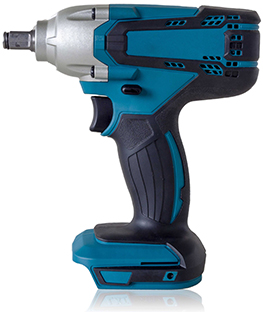
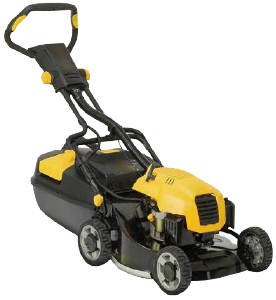
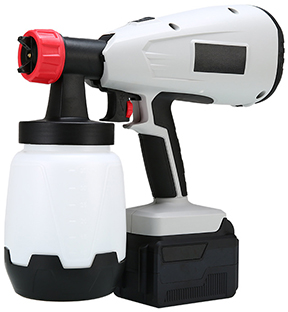
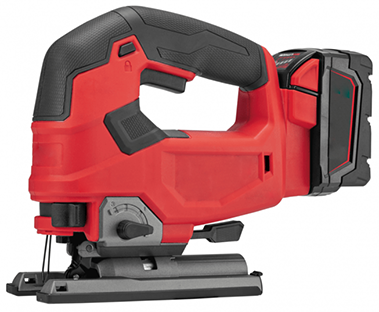
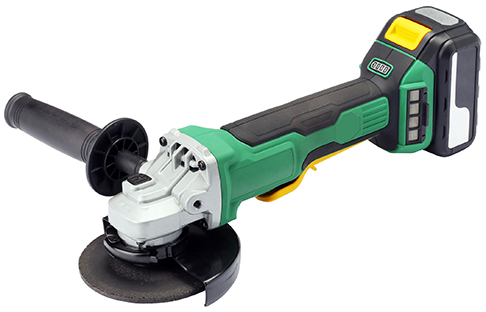
Why Lithium Batteries in Power Tools Need Circuit Safety Protection
Lithium-ion batteries are popular in power tools due to their high energy density, lightweight design, and rechargeability. However, their chemical properties also pose certain safety risks, which is why circuit safety protection is essential. The main reasons are as follows:
To Prevent Overcharging:
Overcharging can cause the battery voltage to become too high, leading to electrolyte decomposition, gas generation, or even explosion and fire. Protection circuits monitor voltage to ensure the battery charges within a safe range.
To Prevent Over-discharging:
Excessive discharging can lower the battery voltage below a safe level, damaging its internal chemical structure, reducing capacity, or making it impossible to recharge. Protection circuits cut off the discharge path to protect the battery.
Overcurrent Protection:
Power tools may draw excessive current due to high loads or a short circuit during use, which can damage the battery or the tool. Protection circuits prevent overcurrent by limiting the current or disconnecting the circuit.
Over-temperature Protection:
Lithium-ion batteries can experience thermal runaway at high temperatures, which may lead to fire or explosion. Protection circuits use temperature sensors to monitor battery temperature and cut off the power supply when it overheats.
Short Circuit Protection:
A short circuit can cause a high current, leading to battery overheating or damage. Protection circuits can quickly detect and disconnect this abnormal current.
Battery Balancing:
Multi-cell lithium battery packs require consistent voltage across each cell to prevent some from being overcharged or over-discharged. A balancing function within the protection circuit achieves this.
To Extend Battery Lifespan:
Through the protection measures mentioned above, circuit safety protection reduces chemical and physical damage to the battery, extending its overall service life.
These protection functions are typically implemented by a Battery Management System (BMS), which is a core protective component integrated into the lithium-ion battery pack.
Certifications and Standards
International Standards
IEC 62133:
A standard by the International Electrotechnical Commission (IEC) for the safety of secondary (rechargeable) batteries, including lithium-ion, in portable applications. It covers test requirements for overcharging, over-discharging, short circuits, and thermal abuse.
IEC 62619:
A safety requirement for industrial lithium-ion batteries, applicable to scenarios like power tools. It emphasizes battery safety under high-load conditions.
UN 38.3:
A UN standard for the safe transport of lithium-ion batteries, requiring batteries to pass tests for vibration, shock, overcharging, and forced discharge.
Chinese Standards
GB/T 18287:
A Chinese national standard for lithium-ion batteries used in devices like mobile phones and power tools. It specifies performance and safety test requirements.
GB 31241:
The "Safety Technical Specification for Lithium-ion Cells and Battery Packs for Portable Electronic Equipment," which covers lithium batteries in power tools. It mandates tests for overcharging, over-discharging, short circuits, and thermal shock.
GB 4706 Series:
A set of safety standards for household and similar electrical appliances, covering the overall safety of power tools, including their battery components.
Other Regional Standards
UL 1642 (USA):
A safety standard for lithium-ion batteries set by Underwriters Laboratories (UL), covering battery structure, performance, and test requirements.
EN 62133 (EU):
A European safety requirement for lithium-ion batteries in portable devices, similar to IEC 62133.
UL 2054:
A safety standard for household and commercial battery packs, commonly used for power tool battery packs.
Mandatory Requirements:
In China, lithium batteries used in power tools must comply with national mandatory standards (CCC Certification), especially GB 31241 and GB/T 18287. Battery products that are not certified cannot be sold in the market.
In the EU, lithium battery products must comply with CE Certification requirements, which involve EMC (electromagnetic compatibility) and battery safety standards (e.g., EN 62133).
In the US, while UL Certification is not legally mandatory, many manufacturers follow UL 1642 or UL 2054 to ensure market competitiveness.
Circuit safety protection for lithium-ion batteries is a necessary measure to prevent risks like overcharging, over-discharging, overcurrent, over-temperature, and short circuits, which are directly related to user safety and device reliability. Relevant mandatory standards (e.g., IEC 62133, GB 31241, UN 38.3) ensure that lithium-ion batteries meet safety requirements throughout their design, manufacturing, and use. Manufacturers must comply with these standards and pass the corresponding certifications before a product is launched; otherwise, they may face market prohibition or recall risks.
SETsafe | SETfuse Solutions, Products
Protection Type: Lithium-ion Battery --- Active Protection (Overcurrent, Over-temperature)
Product Name:
Heat CutOff (HCO), also known as a Three-Terminal Fuse
Series:
SMD Type: SHP Learn more
SMD Type: SHL Learn more
SMD Type: SHJ Learn more
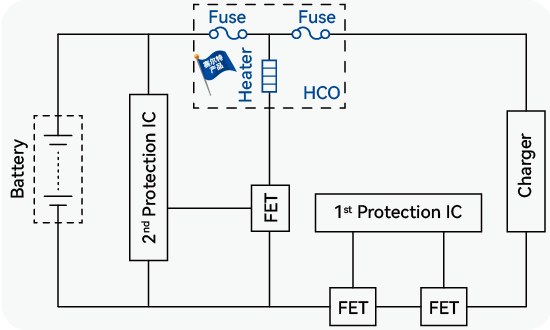
Protection Type: Overcurrent Protection for Lithium Batteries
Product Name:
Miniature Fuses
Series:
SMD Type: SCF1032 Learn more
SMD Type: SCF6125 Learn more
SMD Type: SCF61011 Learn more
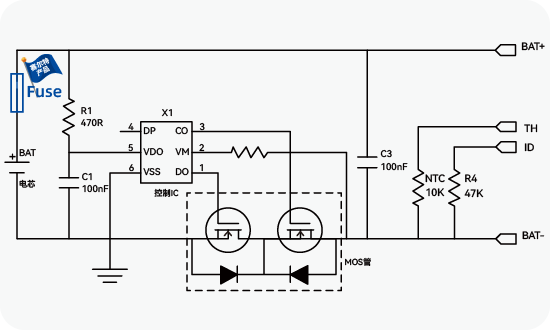
Partner with SETsafe | SETfuse to Transform Technical Challenges into Reliable Solutions
When you encounter technical challenges in selecting circuit protection components or designing system solutions, the professional engineering team at SETsafe | SETfuse is your trusted partner. Specializing in over-temperature, over-current, over-voltage, and active protection technologies, SETsafe | SETfuse offers comprehensive technical expertise and rapid response to meet your needs. Whether you require precise product parameter guidance or comprehensive system-level protection solutions, SETsafe | SETfuse delivers professional, practical, and efficient recommendations and support.
From initial design consultation and solution implementation to post-sales product assurance, we provide end-to-end collaboration, ensuring your project progresses seamlessly and reliably. For any inquiries or requirements, please contact us at: sales@SETfuse.com
Professional Circuit Protection, Supporting You from Concept to Production
































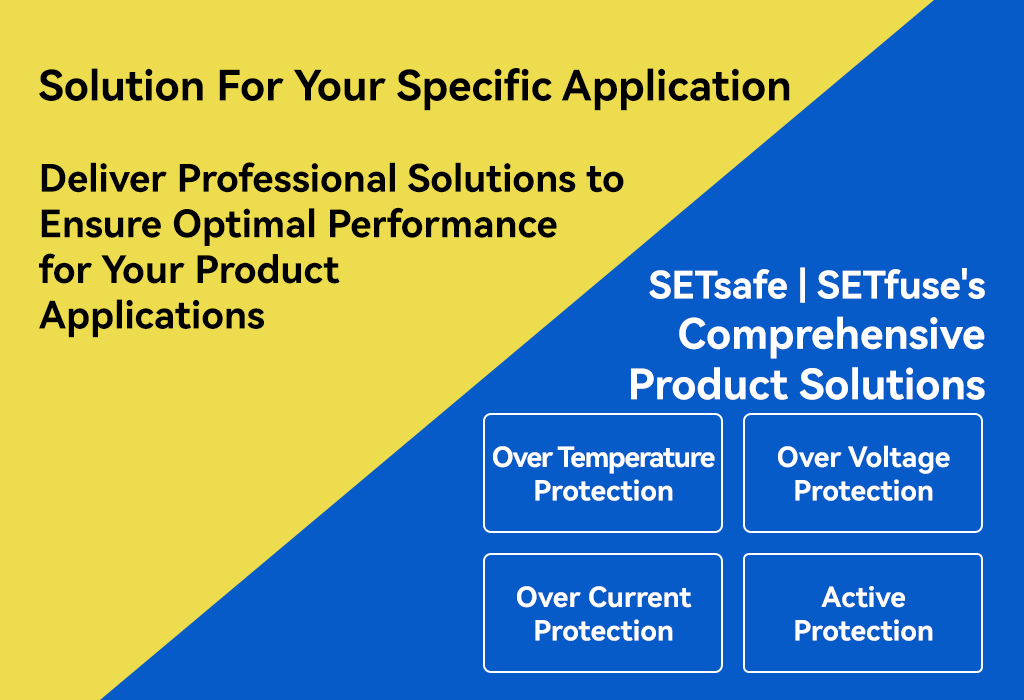

 Rechargeable Battery
Rechargeable Battery Lithium Battery Thermal Runaway
Lithium Battery Thermal Runaway Electric Power Tool
Electric Power Tool New Energy
New Energy PV Power Generation
PV Power Generation Wind Power Generation
Wind Power Generation Energy Storage Batteries
Energy Storage Batteries Energy Storage System (ESS)
Energy Storage System (ESS) Electric Vehicles
Electric Vehicles EV Charging Stations
EV Charging Stations Light Electric Vehicles
Light Electric Vehicles Home Appliances
Home Appliances Small Household Appliances
Small Household Appliances Large Home Appliance
Large Home Appliance Home Appliance Component
Home Appliance Component Kitchen Appliances (Hotplates ...)
Kitchen Appliances (Hotplates ...) Air Fryer
Air Fryer Coffee Machine
Coffee Machine Electric Iron
Electric Iron Smart Toilet
Smart Toilet Personal Digital Products
Personal Digital Products Lifestyle Appliances
Lifestyle Appliances Office Equipment
Office Equipment Walkie Talkie
Walkie Talkie Medical Analysis Instrument
Medical Analysis Instrument Medical Auxiliary Facility
Medical Auxiliary Facility Medical Instrument
Medical Instrument Lighting
Lighting Indoor Lighting
Indoor Lighting Outdoor Streetlight
Outdoor Streetlight Power Supply
Power Supply Power Supply (Power < 20 Watts)
Power Supply (Power < 20 Watts) HVDC in Data Centers
HVDC in Data Centers Power Supply Unit (PSU)
Power Supply Unit (PSU) Battery Backup Unit (BBU)
Battery Backup Unit (BBU) Uninterruptible Power Supply (UPS)
Uninterruptible Power Supply (UPS) Telecommunication
Telecommunication Automotive
Automotive Power Strip
Power Strip Surge Protection Power Strip
Surge Protection Power Strip Security & Protection
Security & Protection Tethered Drone
Tethered Drone Industrial Robot
Industrial Robot Humanoid Robot
Humanoid Robot Service Robot
Service Robot Specialty Robot
Specialty Robot Agricultural Irrigation Equipment
Agricultural Irrigation Equipment Smart Agricultural Greenhouse
Smart Agricultural Greenhouse Rail Transit Facility
Rail Transit Facility Rail-Vehicle
Rail-Vehicle Railway Power Supply
Railway Power Supply Fuel Dispenser
Fuel Dispenser Traffic Control System
Traffic Control System Traffic Signal Light
Traffic Signal Light Commercial Cleaning Equipment
Commercial Cleaning Equipment Delivery Locker (Drone)
Delivery Locker (Drone) Vending Machine
Vending Machine Lightning Protection Components
Lightning Protection Components HVAC Rooftop Systems
HVAC Rooftop Systems Outdoor Electric Wall Mounted Heater
Outdoor Electric Wall Mounted Heater Flag Explain
Flag Explain










































